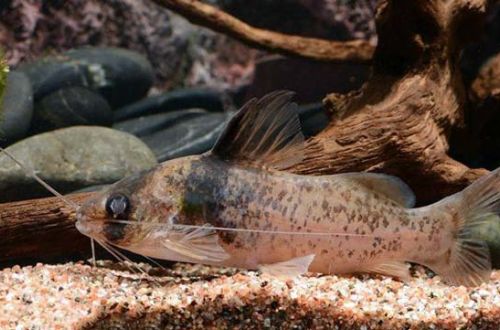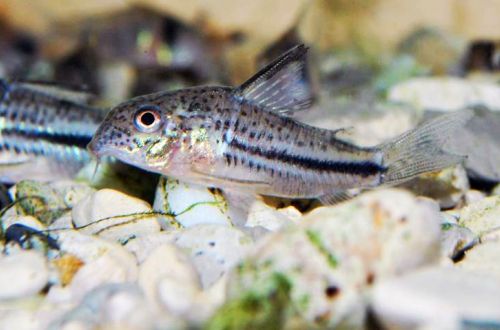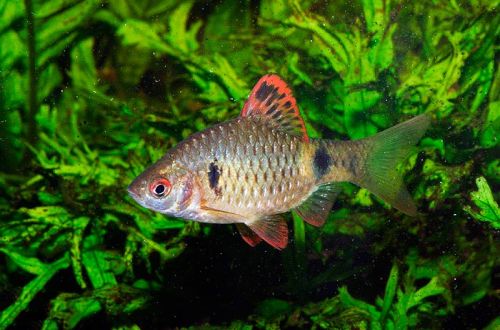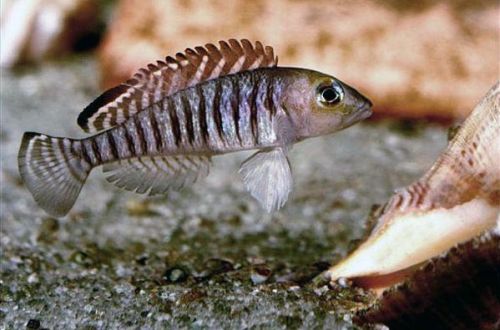
Signatus
Signatus, scientific name Lamprologus signatus, belongs to the Cichlidae family. Endemic to Lake Tanganyika in East Africa. Occurs in the central part of the lake from the side of Zambia. It lives near the bottom near the coastline, but at the same time at a sufficient depth, prefers regions with a soft substrate. As a rule, fish hide in empty shells.

Contents
Description
Adult males reach a length of up to 5 cm, females are noticeably smaller and do not exceed 3 cm. The body pattern consists of alternating vertical dark and light stripes, which are most clearly expressed in males. Otherwise, sexual dimorphism is weakly expressed.
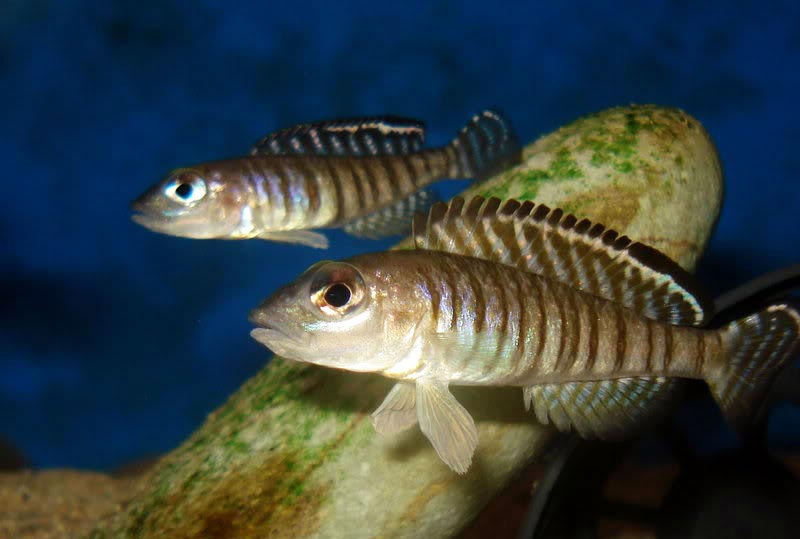
Brief information:
- The volume of the aquarium – from 70 liters.
- Temperature – 23-27°C
- Value pH — 7.5–9.0
- Water hardness – medium to high hardness (10-25 dGH)
- Substrate type – sandy
- Lighting – subdued / moderate
- Brackish water – no
- Water movement is weak
- The size of the fish is 3–5 cm.
- Nutrition – high-protein feed
- Temperament – inhospitable
- Content – one male and several females
Food
The basis of the diet should be live or frozen food (bloodworm, brine shrimp, daphnia), or specialized dry sinking food rich in protein. When choosing, you should give preference to products from well-known manufacturers.
Maintenance and care, arrangement of the aquarium
The optimal size of the aquarium for a pair of fish starts from 40 liters. The design uses a fine sandy substrate in which the fish will dig in search of food, and several empty snail shells as natural hiding places. The shells of Grape snails are perfect in size. In the absence of the latter, Signatus can use any other places to hide. Live plants are not required.
Successful keeping of Signatus is possible in conditions of very clean water and high values of hydrochemical parameters pH and dGH. To maintain the proper quality of water, in addition to its weekly replacement (20–25% of the volume), it will be necessary to install a productive filtration system, as well as regularly clean the soil from organic waste.
Behavior and Compatibility
Territorial and fairly aggressive for its small size. The fish will protect its shelter (shell) from potential competitors. Males are the most hostile to each other, so in a small aquarium there should be only one male in the company of several females. May be kept together with fish of similar size, living mainly in the water column or near the surface.
Breeding / breeding
If you plan to start breeding Signatus, then you should take care of a sufficient number of empty shells, since one female often requires up to five places. Unlike many other cichlids, females are the first to show signs of attention during the mating season, inviting the male to their shell, inside which spawning takes place. In the future, the shells will become a reliable refuge for the newly hatched fry. Although the parents do not pose a threat to their offspring, they do not provide special protection to them, so it is advisable to move the shells with fertilized eggs to a separate tank with identical water conditions.
Fish diseases
The main cause of most diseases of cichlids from Lake Tanganyika is unsuitable housing conditions and poor quality food, which often leads to such a disease as African bloat. If the first symptoms are detected, you should check the water parameters and the presence of high concentrations of hazardous substances (ammonia, nitrites, nitrates, etc.), if necessary, bring all indicators back to normal and only then proceed with treatment. Read more about symptoms and treatments in the Aquarium Fish Diseases section.



